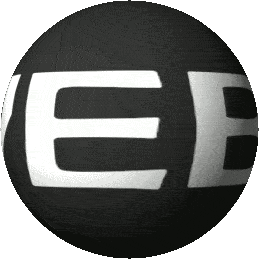WEB2 – More interaction
The WEB2 era started in 2004 when Social Media platforms arose. It came with features not found in WEB1. User interactivity and participation are of key importance for WEB2. You can see WEB2 as the next generation of WEB1. This is because of the added features that allow groups to collaborate, people are able to interact with each other and it changed from static HTML to create way more dynamic pages showing content based on user input.
A more Social WEB
WEB2 is the second phase of the internet as we know it now. Whereas we saw WEB1 as a mostly static read-only, we see this one mostly as a read-write web. It offers almost all users the same freedom to participate on the web and show their contribution on platforms. We know it as the Social Web as well. Good examples are YouTube or Facebook where users can upload their own photos, videos, or any content and others can interact with you on such platforms (like, share, comment, etc.).
The issues with WEB2
WEB2 is not without its challenges. One major concern lies in the realm of privacy, as the collection and utilization of user data by centralized platforms raise significant privacy issues. The concentration of power in the hands of a few corporations is another drawback, influencing content moderation, access to information, and potentially stagnating innovation. On top of that, targeted advertising and the monetization of user data for profit have sparked ethical debates about the ‘abuse’ of personal information. As Web2 platforms become integral parts of daily life, addressing these issues becomes crucial to ensure a more ethical and secure digital landscape.
This is where WEB3 comes in
WEB3 succeeding WEB2 brings forth a wave of positive transformations in the digital landscape. WEB3 is characterized by decentralization, placing greater control and ownership of data in the hands of users. This shift addresses some of the privacy concerns associated with WEB2, where centralized platforms often control user information.
The integration of blockchain technology in Web3 enhances security, transparency, and trust in online interactions, setting the stage for more secure and tamper-resistant transactions. The focus on decentralized applications (dApps) and smart contracts opens up new possibilities, allowing users to participate actively in shaping the digital ecosystem. In essence, the transition from WEB2 to WEB3 signifies a progressive step towards a more user-centric, secure, and inclusive internet experience.

Advantages WEB2
- Enhanced User Interaction: emerged in 2004 with the rise of social media platforms, brought a significant increase in user interactivity. Users could actively participate, collaborate, and engage with dynamic content, leading to a more immersive online experience.
- Social Collaboration: Unlike the mostly static and read-only nature of WEB1, WEB2 introduced a read-write web. This allowed users to contribute content. To collaborate socially on platforms like YouTube and Facebook, where users could share photos, videos, and other interactive content.
- User-Generated Content: WEB2 platforms encouraged user-generated content, enabling individuals to contribute and share their creations. This shift empowered users to shape the digital landscape with their unique perspectives and content.
- Dynamic and Personalized Content: brought dynamic web pages that could adapt based on user input, providing a personalized experience. This dynamic nature allowed for more tailored content presentation, enhancing user engagement.
- Widespread Internet Access: WEB2 coincided with increased accessibility to the internet, making it more widely available to people around the world. This expanded access facilitated greater connectivity, communication, and participation in the digital space.
Disadvantages WEB2
- Privacy Concerns: The increased interactivity and user-generated content on WEB2 platforms often come at the cost of user privacy. Personal information shared on these platforms can be susceptible to data breaches and privacy invasions.
- Centralized Control: Many WEB2 platforms are centrally controlled by corporations, leading to concerns about a concentration of power. This centralization can impact content moderation, access to information, and overall user autonomy.
- Information Overload: The abundance of user-generated content on WEB2 platforms can result in information overload. Users may find it challenging to sift through vast amounts of data to identify reliable and relevant information.
- Monetization and Advertisement Dominance: WEB2 platforms often rely heavily on advertising for revenue, leading to an influx of ads that can be intrusive and disrupt the user experience. Additionally, user data is frequently utilized for targeted advertising, raising ethical concerns.
- Dependency on Internet Connectivity: While WEB2 expanded internet access, it also created a dependency on continuous internet connectivity. Interruptions in internet service can hinder access to information and online collaboration, limiting the effectiveness of these platforms.
Examples of WEB2

